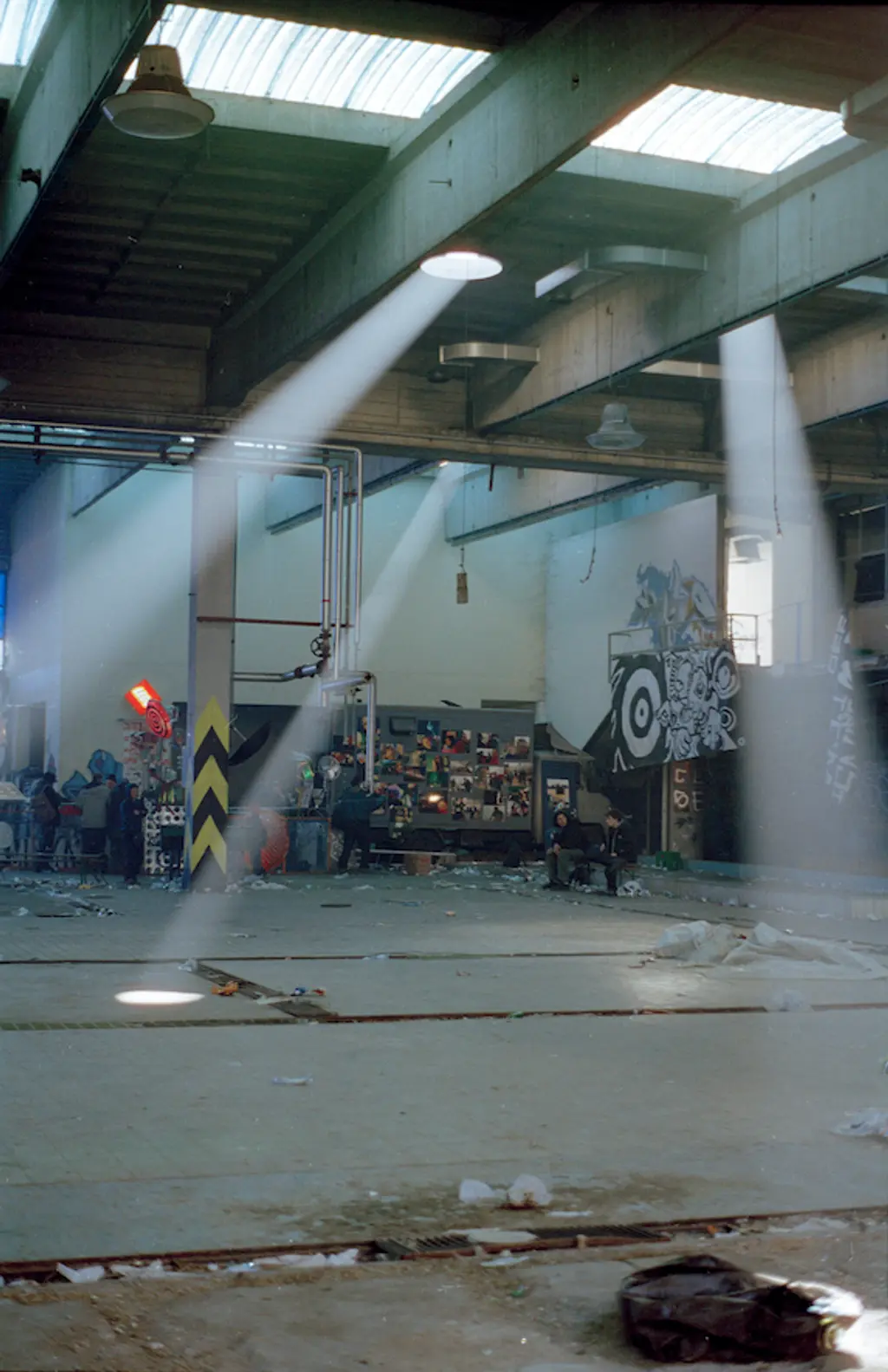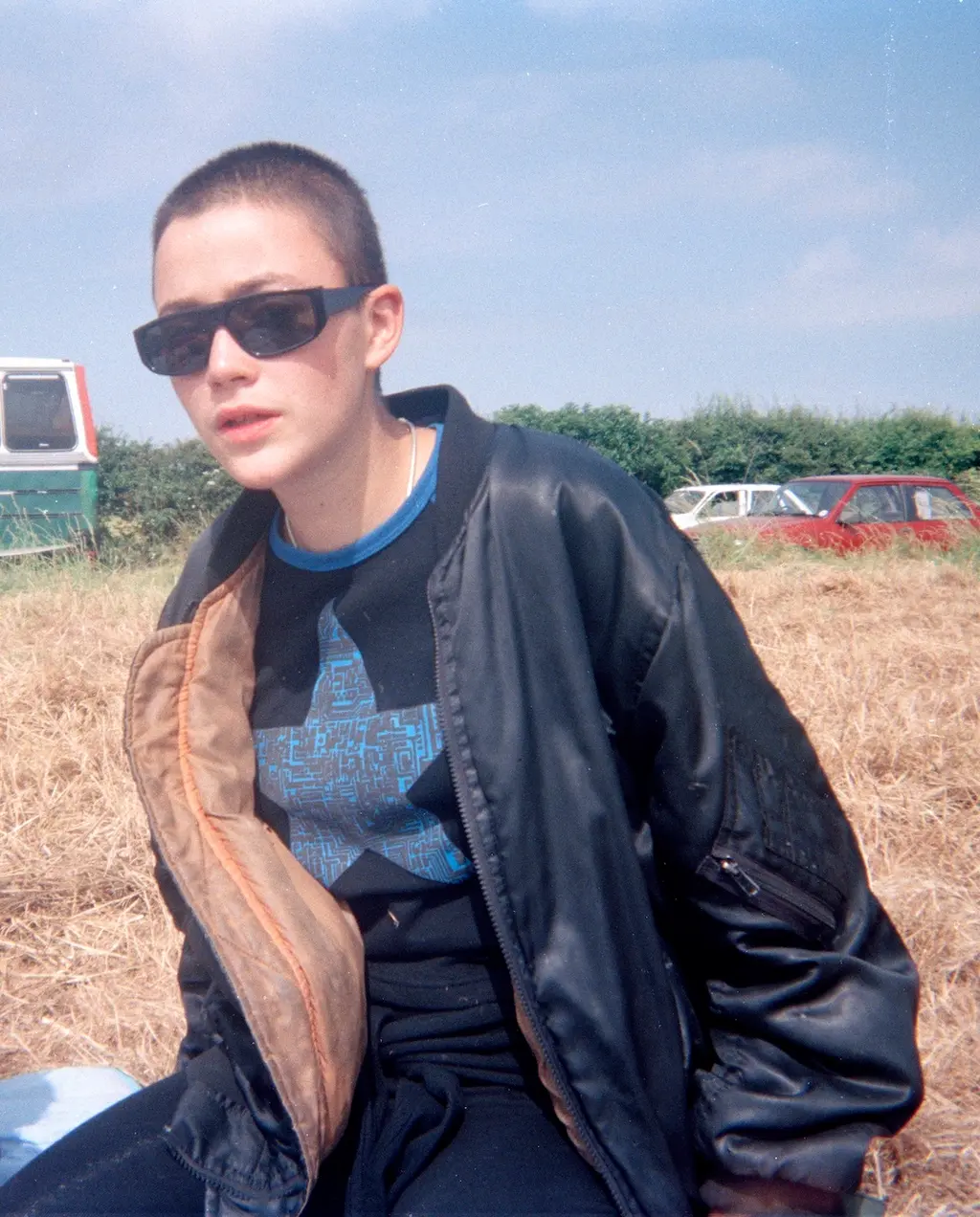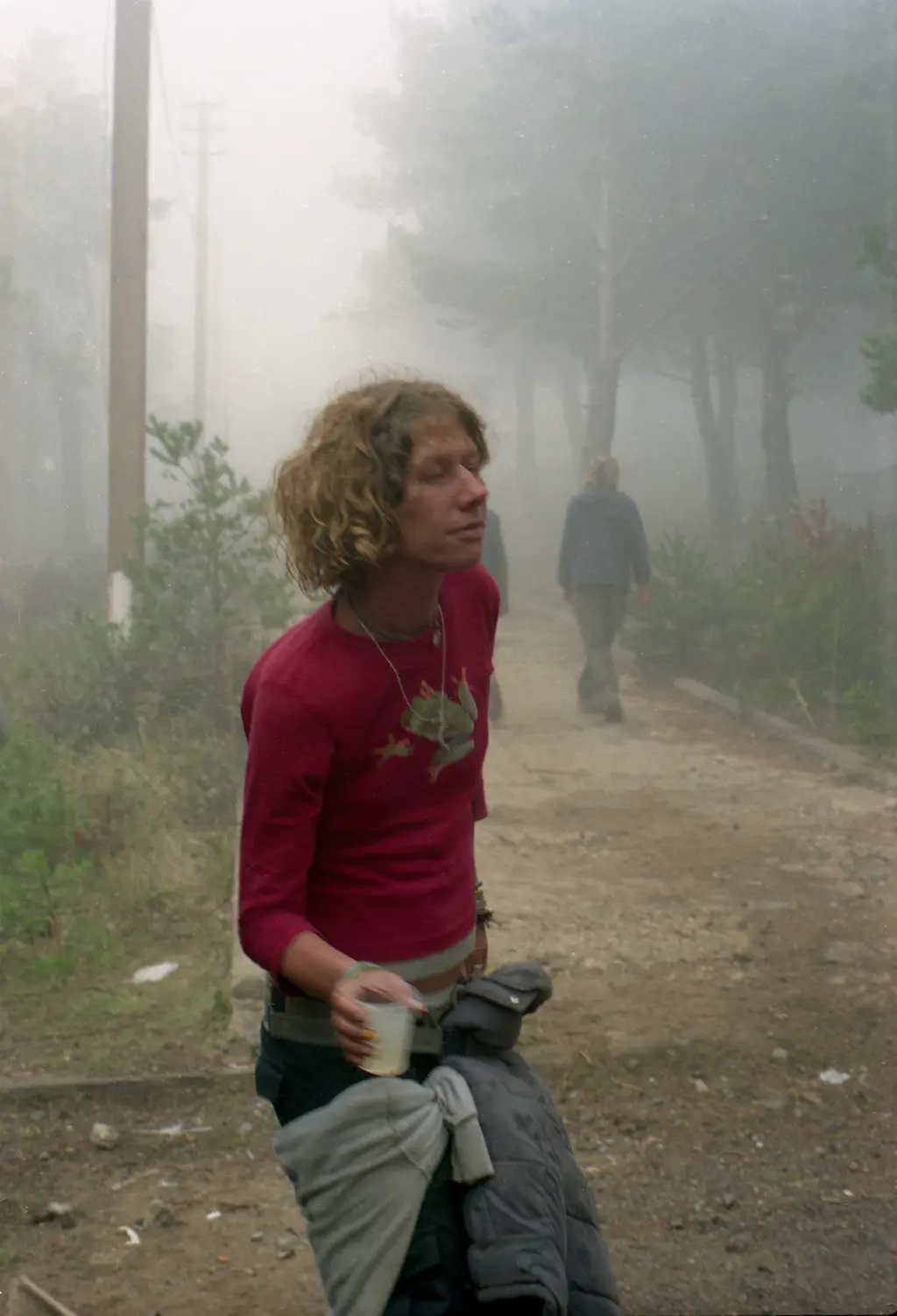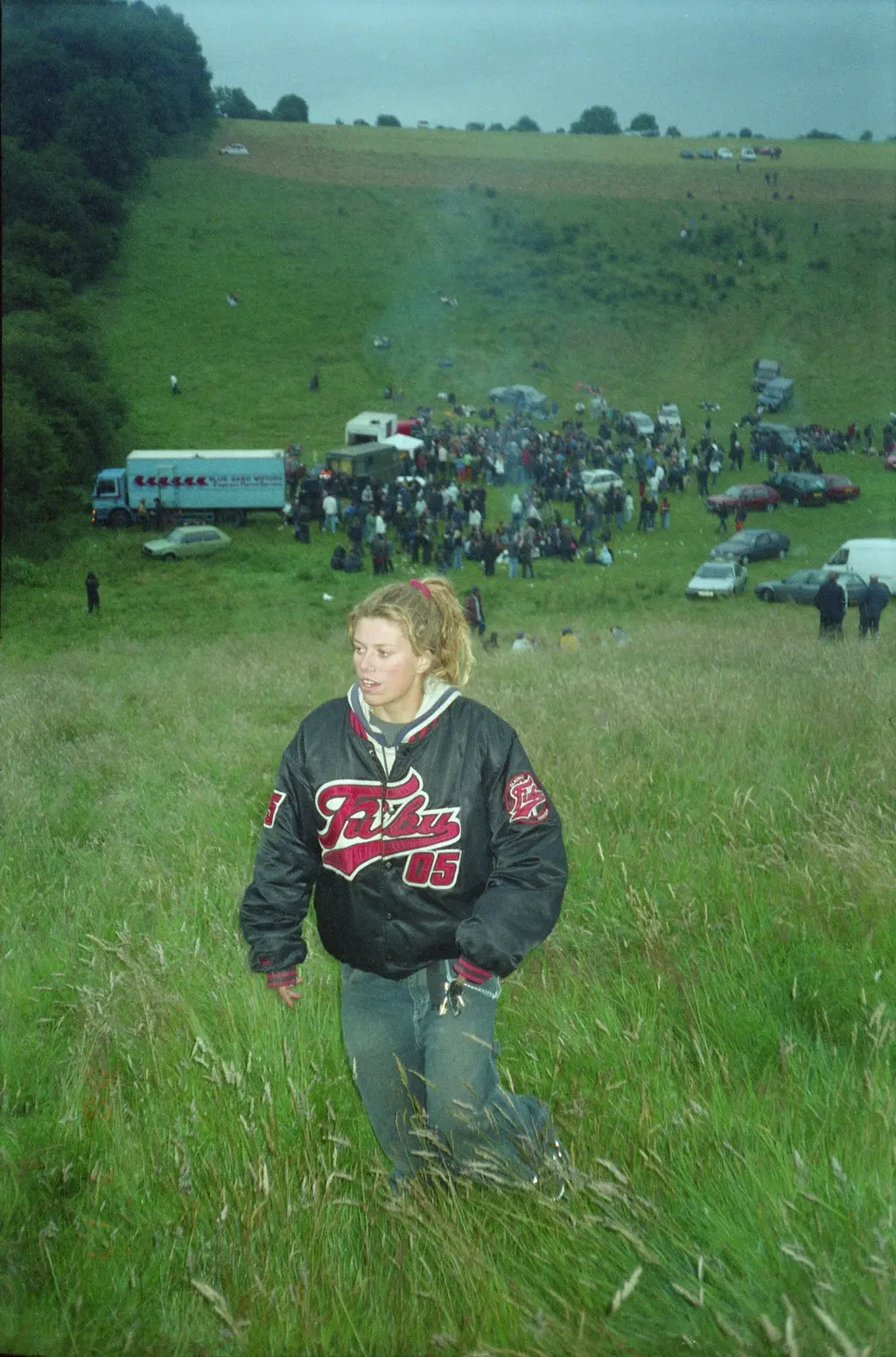The secret history of ’90s free party raves

Build up to the Solar Eclipse (Hungary, 1999)
In her new exhibition, Hidden Tracks: A decade of free parties, which opens on 10th April at Gallery46, Seana Gavin draws from her huge archive of photography and diary entries to give us a first-person peek into the sweaty, heady days of peak rave culture.
Culture
Words: Jade Wickes
When artist and photographer Seana Gavin was 15, she was living a split life. Most of the week was spent diligently going to school. On the weekend, though, she’d disappear for two or three days, dancing at free parties until the crack of dawn before heading back to her friends’ squats for afters. To be fair, the artist had grown up in Woodstock, upstate New York, before moving to London, so perhaps it’s no surprise that she fell into the free party scene so quickly.
This was in 1993, when free parties across Europe were coalescing into a movement of united young people who were committed to an alternative way of living, railing against the establishment and denouncing the commercialisation of dance music. Gavin was hooked. When she later enrolled at Camberwell College and picked up her first camera, those weekends of partying turned into entire summers. It was all about rebelling against a spoonfed way of living and had an anti-capitalism approach,” she says. “The party organisers had a donation only policy and wanted them to be as accessible as possible.,” she says. It is this culture of raves and rebellion that serves as a backdrop for Gavin’s upcoming solo exhibition, Hidden Tracks: A decade of free parties, at Gallery46 in East London. For the show, she gathered original photographs, rave flyers and diary entries documenting the sound systems that threw illegal raves during her teenage years.
“I honestly never thought anyone was going to ever see these photos, or that they were ever going to be shown to a larger audience,” says Gavin. “To be honest, that material was kind of buried for a good 15 years before I first showed it [at galeriepcp] in Paris in 2019.”
Why now? “Everyone seems to still be very fascinated with that era and I became aware that there wasn’t a huge amount of documentation of it, especially of the free party movement, which was very underground,” says the artist. “It just felt like the right time.”

Daybreak, New Year’s Day, Rome (2002)

Seana Gavin, Mother Free Festival (Lincoln, 1994)

Sacha, dancing in the mist (Tarragona, Spain, 2003)
Hi, Seana! What sparked your involvement in the free party scene?
As a teenager, I guess like all teenagers, I was looking to find where I fit in. All my friends outside of school lived in squats – I was very much into all kinds of alternative ways of living. I started going to a club called Whirl-Y-Gig in Shoreditch, which was quite “fluffy” – you’d get your face painted, it was a bit trancey, but it would finish at 12am. So we were always looking for somewhere to go afterwards, to carry on the night. I had a few older friends that took me to the free parties and raves that were going on after. The first one I went to was a small Spiral Tribe party after Whirl-Y-Gig. I could feel straight away that it had a different edge. The music was harder, and so were the people, and also a bit older. Which was more exciting to me. I felt like I’d discovered something new and exciting, and we all felt connected through the dance floor.
What does it feel like to look back on these images of you and your friends partying in the context of an exhibition?
It was quite a healing process for me, because I moved myself away from the scene when I lost my best friend at one of those parties. That was probably also partly why it was all buried, because it was all connected to that tragic ending. So it was definitely an important process for me to share the material, to look back and also remind myself of the positives and the sense of community and family that was there. Lots of people I’d lost touch with ended up reaching out to me.
Why do you think we can’t quite shake that fascination with ’90s-era rave culture?
It was an innocent time, in some ways, compared to now. And the technology was very different. There was a party line number that we’d have to call to find out where the address [for a rave] was. Without mobile phones you were forced to be present, which made you less self conscious; once selfie culture took over, people weren’t as engaged. And I think people that weren’t around then, look at that era as a time they wish they’d lived through.
Are there any particular memories from free partying that stick out to you?
One summer, when I was 18, I had a full summer of travelling across Europe ahead of me, going from one party to the next, and I had £200 in my pocket for the whole summer. That was definitely memorable. I wasn’t holding on to materialistic things or objects. I could travel with a small rucksack, a few items of clothing and basic items. I barely even had a mirror near me, so I didn’t even know what the hell I looked like half the time. A lot of freedom comes from that. You can really just let go and lose awareness.

Charlie at a rave in a quarry (Brighton, 2000)

Barcelona 2000 (Badalona, Spain, 2000 – 2001)
What ingredients do we need to make a really good party?
The people and the sense of community. The music, obviously. A lot of the parties I went to back then were multi-sound systems. There was something for everyone. As I got older I gravitated towards the rooms that were playing more dancehall, hip hop and, you know, cheese – so less hard techno. So, yeah, a good sound system that doesn’t kill your hearing or give you tinnitus.
What do you hope people will get out of the exhibition?
I hope that, for some, it will bring back memories of that moment in time and capture its essence and feeling. For the people that weren’t there, I hope it’ll give a sense of the perspective of what it was to be an insider in that scene, rather than someone on the outside looking in. There are diary entries as well, which really help to create the whole picture of the experience.
Hidden Tracks: A decade of free parties will run from 10th-28th April at Gallery46. Get your hands on Seana’s photobook, Spiralled, here.






